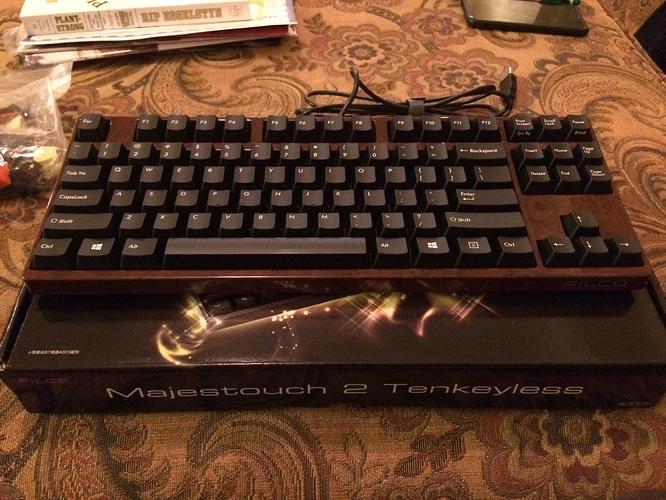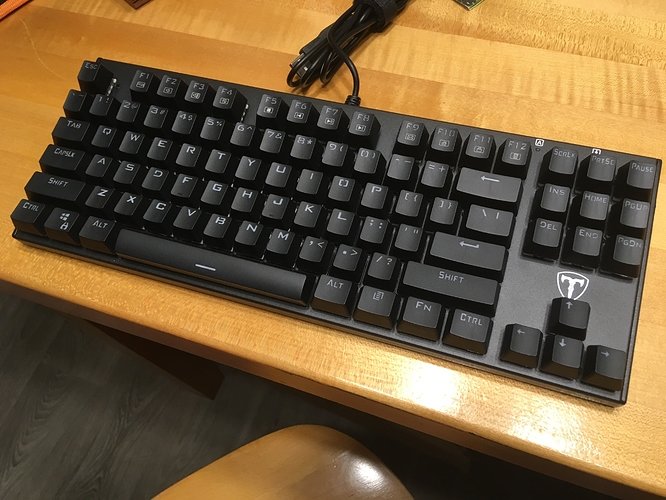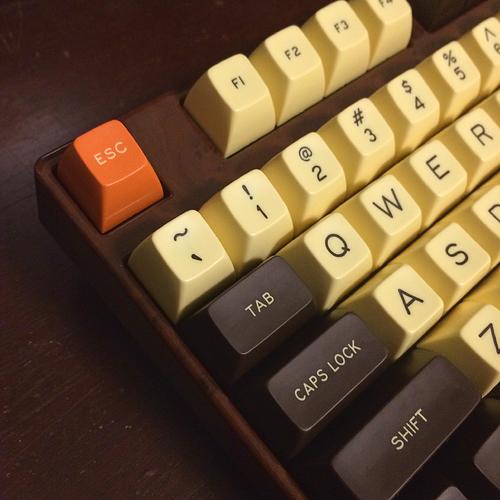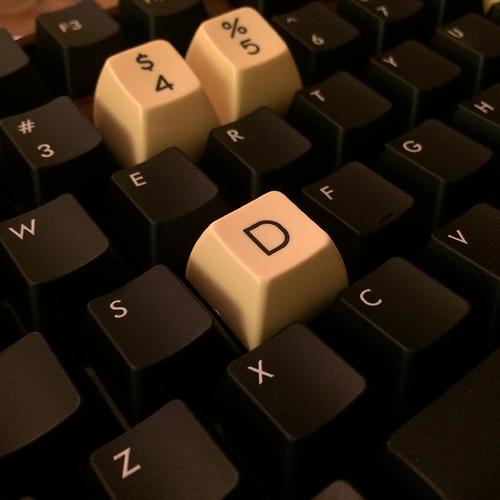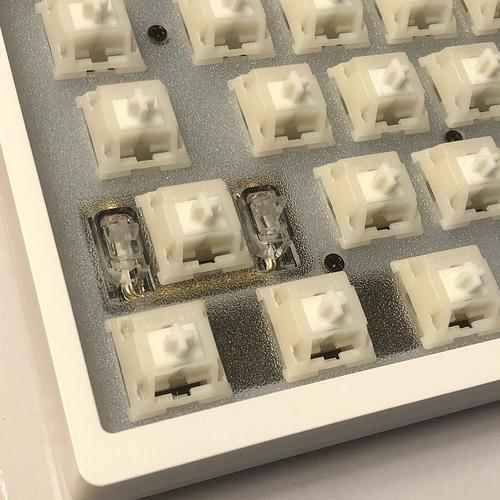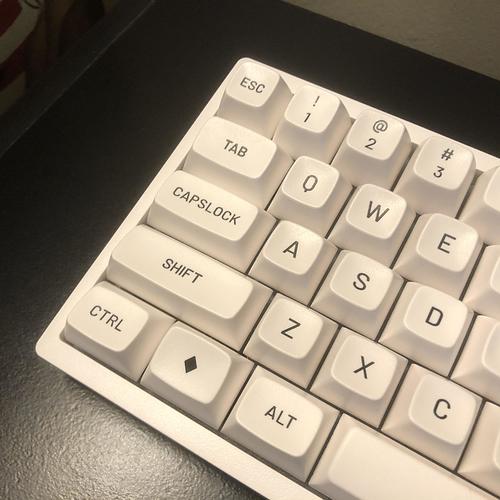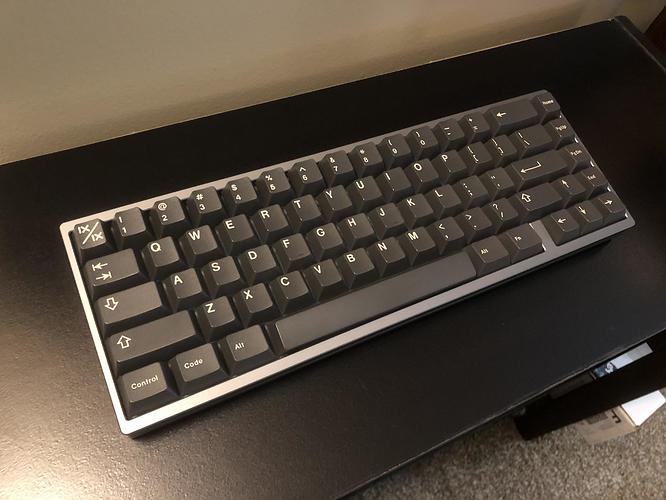I’m sure it’s been discussed here before, but I wanted to make a thread about the interaction between switches and caps, and how the resulting tactile properties are emergent between them.
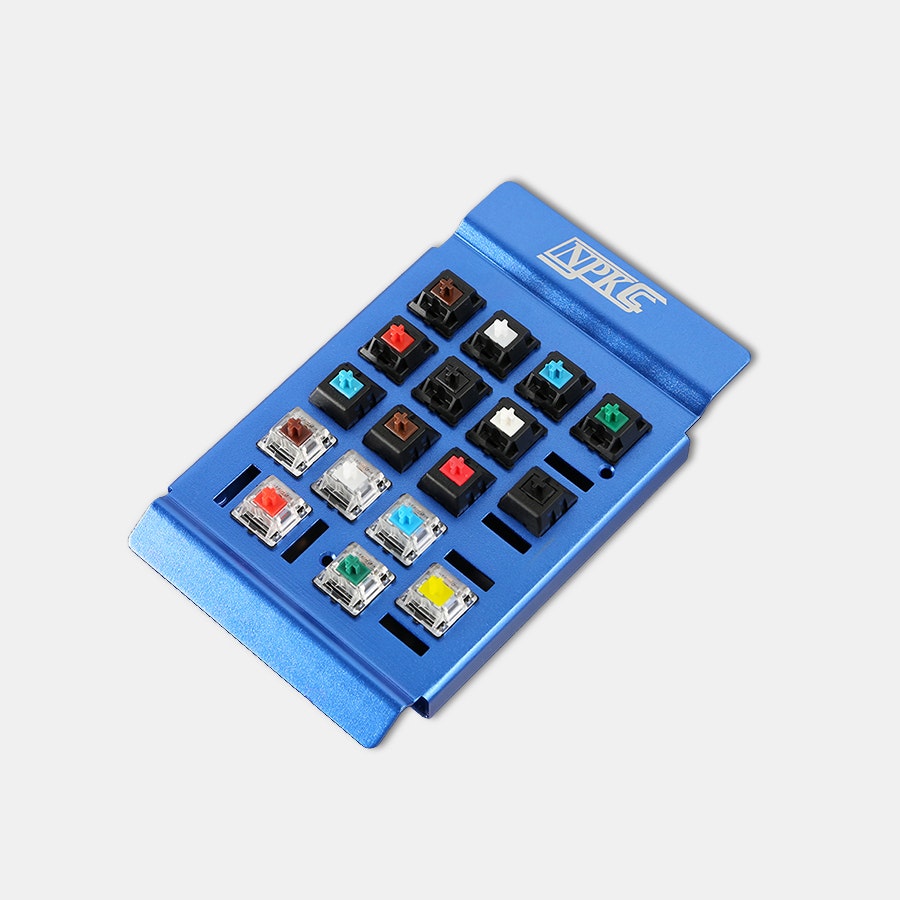
Babby’s first switch tester - or in this case, mine. The one I had was silver, but had an otherwise equivalent selection of switches; Nylon Cherries and Kailhs, and poly-top Gaterons.
I think one of the first things a person learns about the keebverse is that different switches mean different sounds and feels. What’s slightly less obvious is that keycaps further modify both of those elements significantly.
I first realized this years ago, thanks to good old Cherry Browns. I have a Filco MJ2; a well-made if totally generic keyboard, equipped with the aforementioned memeables.
It seems like ages ago in terms of this hobby / product sphere - I bought that keyboard at a time when Browns were generally recommended as the safest bet for someone who didn’t know anything about keebs, and Cherry switches were “the real deal”. The most adventurous thing on a switch tester from Massdrop might be a Cherry White or Gateron Yellow.
My first non-garbage keeb, before the MJ2 - an EasternTimes Tech I-500
The MJ2 was my second keeb, after a cheap Amazon thing with clone blues. I already loved that thing, so the MJ2 impressed me further with its steel plate and generally above average build quality. Now to the point here; Filcos tend to come with very thin, pad-printed ABS keycaps. They look black, but they’re actually a translucent bluish-grey - light will shine right through them.
[ Imgur deleted my old gallery of this, and I don’t feel like digging up the photo. ]
I loved the typing feel of these caps on the Browns, but I didn’t want to wear-out the legends. I also wanted something that would vibe with the brown lacquered case option I’d gone with - well, I’d actually picked the case to go with a keyset I already had - SA 1965 - so it wasn’t long before I swapped those keys onto the board.
It looked gorgeous.
It felt meh. It sounded bleh.
“What gives?” I was thinking. SA caps were all the rage on reddit, and as far as I could tell, they were extremely well-made. Why did this keeb that sounded and felt nuanced and satisfying just before, suddenly sound and feel clunky and clumsy?
That’s when I learned that a cap’s weight, shape, density, and composition all play a role in both aspects.
I’d gotten a preview of that when I’d installed some Tai-Hao caps on the cheapo board, but this really drove it home for me. Hands-down, I preferred both the sound and feel of those super-thin caps - at least, on those Cherry Browns, mounted on that steel plate, in that plastic chassis. I’m still considering buying a Filco Ninja for the front-printed caps…
Fast-forward a handful of years to last night. I’m re-building my KBD67L R1 & 2 by swapping the plates between them, and chanching switches in the R2. I’m going to be using that one at work, so I knew I wanted to use silent switches.
The ones in my collection I’d technically rate the best are Gazzew Boba U4’s, but so far they really hadn’t been for me; I’ve found the bump a bit too strong and/or wide. However, I’d only tried them with GMK and OEM caps, so I decided to give them a shot with MT3.
There we have half of the impetus for this post - I am loving how these switches feel with heavier, taller caps. If these aren’t “just right”, they’re very close.
The other sibling keeb has a heavy aluminum case and Tecsee Diamond switches. I decided to try MT3 there as well - and while I liked it, the sound and feel just didn’t “mesh” for me here as much as it did with GMK caps. The lighter, shorter, but still thicc caps bring out that delightful “wet” clacc from this combination in a way that MT3 doesn’t.
This surprised me because that’s usually how I’d describe what MT3 does in most cases I’ve tried them so far; it brings out a clean, deep sound compared to whatever baseline I’m familiar with in a given switch and/or board - and while MT3 was deeper here, it just wasn’t as clean or “dense” sounding.
That’s the ultimate impetus for this post - and what got me thinking again about just how emergent the final experience of a build really is. The gestalt of a given configuration owes its character not just to each part, but their interactions with each-other as a collected whole.
So! There you have the highlights of my thoughts and experiences on this topic - how about you folks? Have any combinations surprised you or subverted your expectations? Do you have any reliable stand-bys that you turn to for given properties or effects? I’d love to hear about your own thoughts and experiences here.
